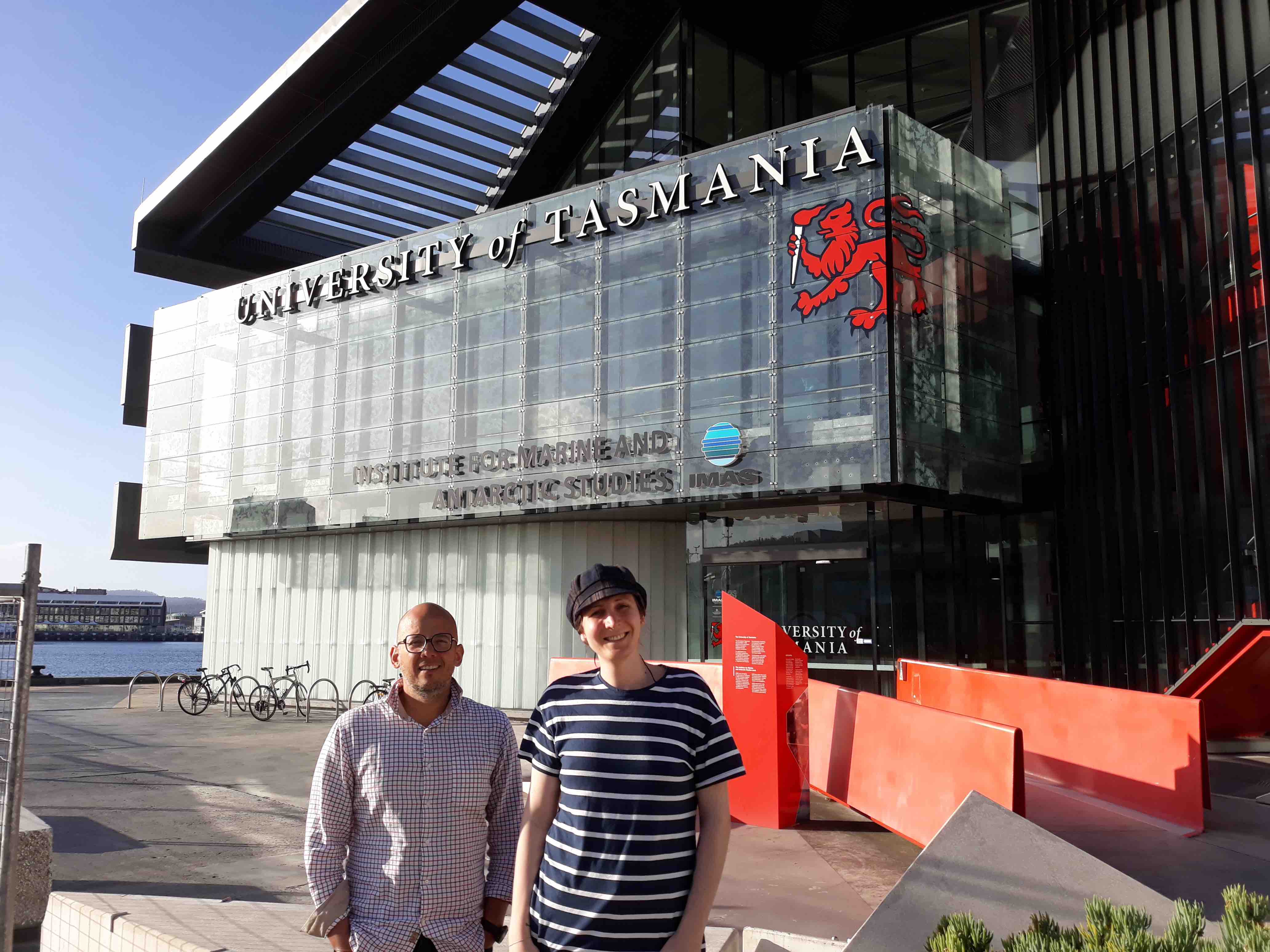We are @ IMAS in Tasmania!
This week our time in Australia comes to an end with a visit to my long-term research collaborator and friend Prof Nicole Webster. Nicole is a reserach scientist a the Institute for Marine and Antarctic Studies of the University of Tasmania.
From a microbial ecology and evolutionary perspective of the sponge-associated microbiome, she is helping us develop the theoretical framework for the assembly of complex symbioses that we are currently building as part of my project The origin of complex symbioses funded by the Leverhulme Trust.

We have had very interesting discussions with Nicole about the ecology and evolution of these complex symbiotic associations and how we can incorporate different different evolutionary and ecological mechanisms into a mathematical framework to better understand their emergence.
Nicole and Sophie also kindly organised a seminar to showcase the research we carry on in the lab. The seminar was entitled: Network perspectives on community assembly and disassembly and you can read the abstract below.
Abstract
Quantifying general patterns of community structure, and the mechanisms behind them, is key to understand the persistence and collapse of complex ecological communities. To achieve this, we should develop holistic approaches that not only consider species composition but also ecological interactions between them. We tackle this challenge by unveiling empirical patterns of species interactions networks alongside theoretical approaches that enable a better understanding of their assembly and disassembly.
In this talk, I will present empirical and theoretical examples of this approach applied to microbial marine and terrestrial vertebrate systems. On the microbial side, we explore the relation between biofilm microbial network structure and the successful settlement of coral larvae. We complement this with a mechanistic theoretical approach to microbial community dynamics in the host-associated microbiome to investigate the emergence of host types in marine sponges. Focusing on terrestrial avian communities, we assess the beneficial effects of protected areas on food web structure and relate these changes to considerations of biomass flow across the ecosystem. Lastly, I will present a theoretical approach to predicting Network-Area relationships. This contributes to existing knowledge on the spatial scaling of biodiversity.
Thanks Nicole and Sophie for the warm welcome and the great time @ IMAS!